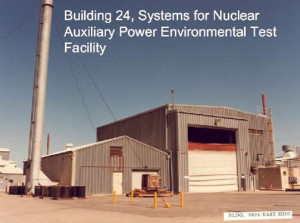By Michael Collins
“Start talking to the former employees — those who are left alive — that have not contracted cancer,” former Rocketdyne technician Dan Parks implored at the June 24 meeting of the Santa Susana Field Interagency Work Group. A lifelong resident of Simi Valley, Parks worked for Rocketdyne’s Radiation Physics Department of Reactor Operations and was involved with SNAP, an experimental reactor for use in space missions.
Now, decades later, the inquiries into health threats from the lab have caught up with Parks. “I got a letter from UCLA telling me I’m one of the many people that were overly exposed, not only to radiation, but to chemicals,” Parks told the members of the work group. “I’m your best witness. I don’t understand why I have never been contacted, other than by UCLA. Nobody wants to interview the people that were involved with this directly. Interview your witnesses, interview your people, interview your employees. They’ll tell you exactly about all the incidents that caused this contamination. This is just the tip of the iceberg. We’re talking about major contamination. It’s there.”
As government officials squirmed in their dais chairs, Parks detailed one of “thousands of events” that he claimed he experienced during his tenure at Rocketdyne’s hilltop compound. “The shift supervisor comes to me,” Parks recalled. “I worked in the department called Health Physics. He says to me, ‘Can we release the core gas tonight? Is it too hot to release?’ And when they say ‘hot,’ meaning the fission products that are in the core gas stored in the tank. Ultimately, it’s pumped up the stack, and where does the wind blow? Right over Simi Valley, perhaps the San Fernando. Well, the supervisor comes to me and asks for a count. We give it to them, and they release it up the stack,” he said. “Preferably at night.”
Parks said the radioactive releases alarmed him then and since. “When you have a core gas, whatever, being released up into the atmosphere, you have to believe it is being blown by the wind, approximately to Simi or down the hill or wherever the wind happens to be blowing that day. I am not just talking about one particular reactor. That was the process for the SRE [Sodium Reactor Experiment] reactor, all the SNAP [Space Nuclear Reactor] reactors, just about everything nuclear up there.”
Deliberate releases of radionuclides weren’t the only problems he faced, Parks said. “We had many nuclear fires going on up there in the reactors, and I was in a couple of them.”
Parks refused to expand on his comments after the meeting, and has since declined requests for an interview. But his statements in June represent the most damaging public disclosures to date by an insider from Rocketdyne’s nuclear age.
27 Years of Award-Winning SSFL/Rocketdyne Reporting
1998 – 2025













Recent Comments